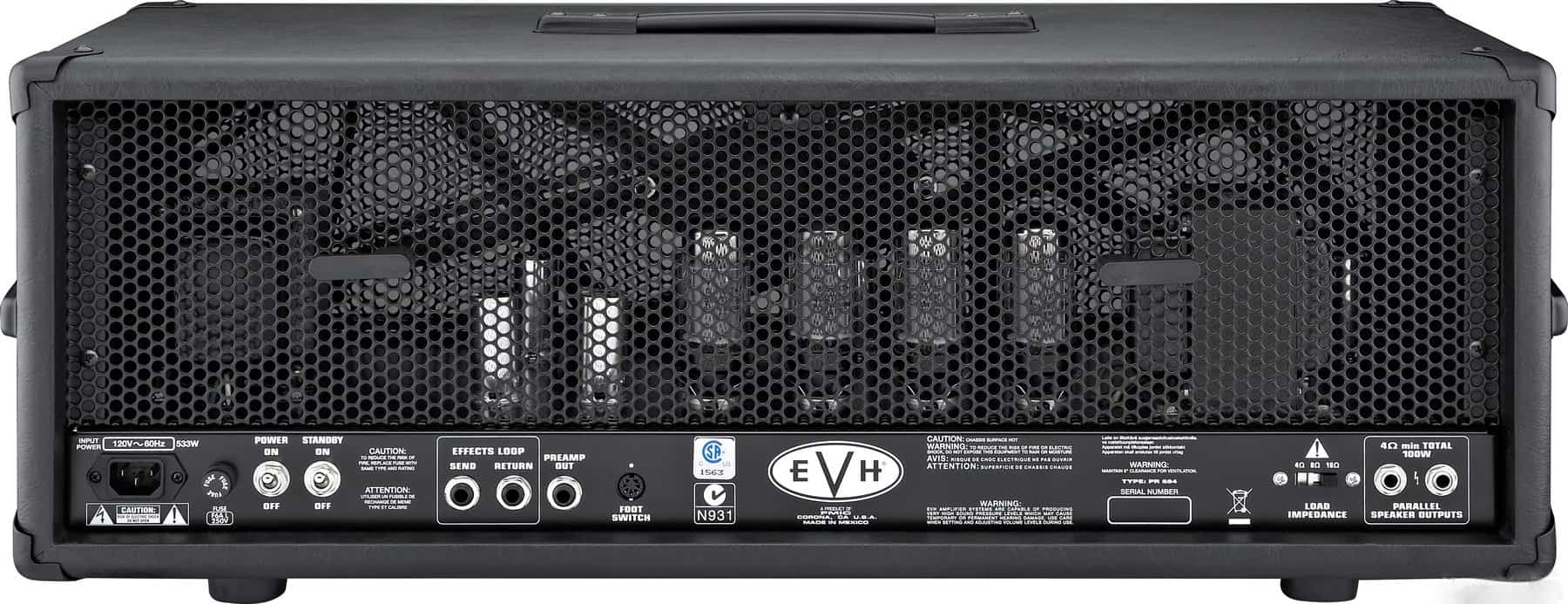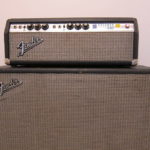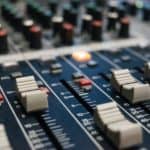You just bought a new amp, or you’ve been playing with your friend’s one. You turn it around and you read this cryptic message besides a plug jack…
“Preamp out”
What’s this for?
A preamp out is a way to take your signal out from your amp before it passes through the power section. Some preamp outs, when plugged in, disconnect your preamp from your power stage. This is useful when you want to send the signal from your amp directly to a mixer to record it or send it through the house speakers.
In this article we’ll first define what’s a preamp, then we’ll discuss the preamp out that some amps have. We will look into their use cases and their drawbacks. After that, we will compare this out with other kinds of amp outs.
After reading this article, you will have a clear idea of what your amp is capable of.
Let’s get started!
What is a preamp?
Before going forward we need to first go back to basics.
Your amp is, most likely, comprised of 2 stages: The preamp and the power section.
The final sound that you hear when playing your instrument through it is heavily influenced by these two stages.
The preamp part of things is what happens first.
The signal that comes out of your guitar pickups is not strong enough to “move” your amp’s speakers, or even register in your computer if you’re recording it.
When you put that weak signal through a preamp it gets amplified (d’uh…) to what’s called line level.
Line level is a standard that’s strong enough to be directly recorded or to be then sent forward to a power section that amplifies it even more so it can push the speakers.
What a usual signal chain ends up looking like is:
Instrument level signal -> Preamp/Line level -> Power section/Outboard gear -> Speakers
As we said before, both the preamp and power sections affect your tone. Particularly, the preamp section is the one that usually lets you modify the signal with EQ.
Do all guitar amps have preamps?
As far as what can be defined as a traditional guitar amp, they all have preamps built-in. They’re mainly preamps, actually, some could argue.
Not all guitar amps have power sections, but most do. And their influence in tone is as important.
For instance, early overdriven sounds were generated by cranking the amp’s volume, making the power section saturate.
Nowadays it’s normal to have a gain stage in the preamp, before going into the power section.
What is a preamp out and what does it do?
A preamp out is basically the option to skip the power section of your amp and send the signal past the preamp stage to where you plug the other end of your cable into.
The preamp out doesn’t do anything particularly different than what your amp would do normally. This out is usually hardwired directly into the power section.
The preamp out is just a backdoor to your preamp. It lets you get a signal to work with without having to make your speakers work (or your power section, at least).
On many amps inserting a plug into the power amp in will disconnect the amp’s preamp from the power amp.
Many amps offer you this alternative in their backplate.
When should I use a preamp out?
The preamp out is an alternative you should use when you want your instrument’s signal to take a path different than the one presented by your amp. As we said above.
The most common use of this out is to go straight to a mixer, and then to the house speakers, or maybe from the mixer into a computer to be recorded.
In many cases, the output of the preamp out might be higher than line level, so it’s recommended to get through a mixer first to attenuate it before hitting the sound card of a pc.
Many modern sound interfaces have built-in preamps that can take instrument-level signals and send an appropriate line signal to the PC.
The drawback of going straight into a mixer
A problem that you might face when you go straight from the preamp to a mixer is that you might sound like crap.
This is because, as I said many times by now, the final sound you hear when playing through your amp is the result of the preamp + the power section. Well, actually your cabinet and speakers affect the sound also.
This is getting complicated, isn’t it?
You’ll be lacking that power section, cabinet, and speaker coloring in this case.
There are many ways to overcome this problem, and you might have heard about “cab simulation” and “impulse responses”. These are digital solutions that make up for that lack of power section and analog output.
But their discussion is beyond the scope of this article.
Can I plug the preamp out of my amp into another amp’s input?
Yes, you can. We can’t assure you that it will sound good.
In some cases, this will result in a lot of distortion due to the gain stage of the first preamp your signal is traveling through.
You should give it a try and see how it works out for you.
Make extra sure to not confuse preamp out with speaker out. This output should only go into your cabinet or an attenuator. You will be at risk of damaging your gear otherwise.
Preamp out vs line out
The main differences between these two are the following:
- If your preamp out is too hot and your amp offers you a line out, this last one should give you a more usable signal
- The preamp out implies that it incorporates all the signal processing present in the preamp stage, such as channel volume or EQ
- The line out implies that the signal is not processed and just amplified to line level
The distinctions are subtle, but this should be the logic between them if ever these both outs are present.
Preamp out vs speaker out
As we mentioned earlier, you should not ever confuse your preamp out with your speaker out.
They are different kinds of monsters and using a speaker out into a piece of gear that’s expecting an instrument or line-level signal could result in some serious damage.
While the preamp out is an escape from your signal BEFORE the power stage, the speaker out is the exit AFTER the power stage.
The output of a speaker out is strong enough to move cabinet speakers. Be extra careful about it and never plug it into anything that’s not prepared for it.
Cabinets and attenuators are ok for the speaker out.
Preamp out vs effect loop (effect send)
In practical terms, the preamp out and the effect send are very much the same in most cases.
Some differences that you could find between a preamp out and an effect send are:
- Plugging into a preamp out might disconnect your preamp from your power section while plugging into an effect send should not.
- Some effect outs have custom volume pots to adjust the signal level they take out the amp, while preamp signal level in most cases is only affected by the channel’s volume
- Some effect loops operate at instrument level, where preamp outs are expected to be line level or higher.

Hello there, my name is Ramiro and I’ve been playing guitar for almost 20 years. I’m obsessed with everything gear-related and I thought it might be worth sharing it. From guitars, pedals, amps, and synths to studio gear and production tips, I hope you find what I post here useful, and I’ll try my best to keep it entertaining also.





